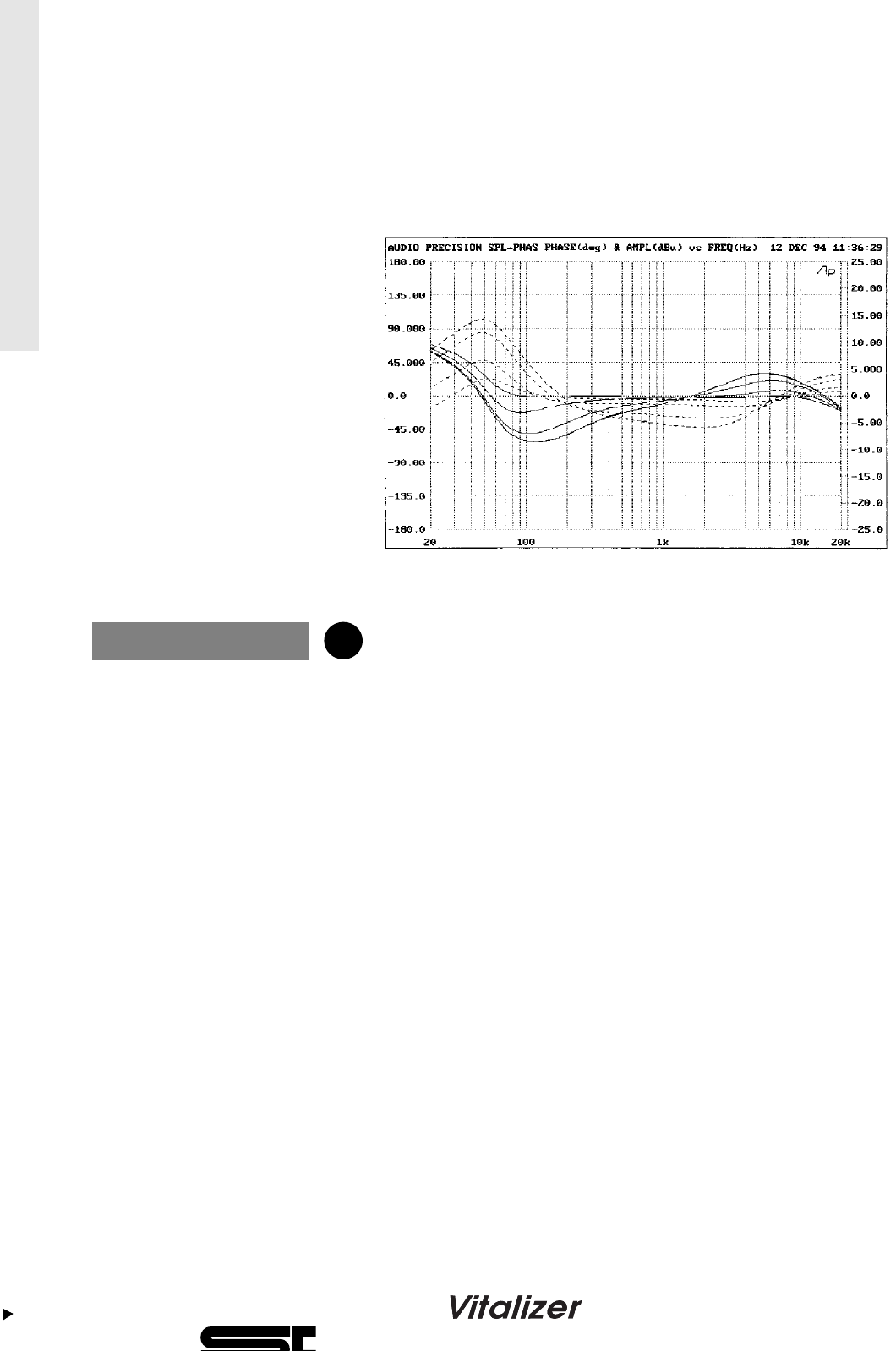
Fig. 4:
The dotted line shows
frequency responses for a
soft Bass (S
OFT) at varying
P
ROCESS and a MID-HI TUNE
of 3.5 kHz.
The solid line shows the
phase responses, which
always drift only a few
degrees if the P
ROCESS inten-
sity is increased.
The diagram shows very
clearly that the mid attenua-
tion gets stronger as the
P
ROCESS value increases.
An improved harmonic struc-
ture results in a silky top-end
with far better separation
and intelligibility.
14
STEREO
STEREO VITALIZER alters the frequency spectrum in such a way that the
balance is maintained between all frequency ranges even at varying
monitor volumes. For the human ear, the sound is more pleasant and
easier to perceive than the original. In other words, increasing the P
ROCESS
value also increases the intensity of the MID-HI TUNE filter and the BASS
filter, whilst dominant mid frequencies are damped by amplitude-
controlled phase shiftings. This improves the perception of loudness, clarity
and the bass punch, i.e. the strength and fullness of the audio signal.
The S
TEREO VITALIZER works with steep filters and controlled changes of
the phase relationships of the harmonics to process the harmonics struc-
ture.
We consciously did without the generator principle of »Exciters«. The
S
TEREO VITALIZER's harmonic filter does not add any distortions to the
original signal, unlike with the generator principle. It extracts all the infor-
mation it needs from the original signal. This significantly reduces the
hearing fatigue effect on the listener. By influencing the phase relationship
in an intelligent fashion, the harmonics which have been filtered out are
emphasized with increasing addition expressed as a percentage. The effect
significantly improves the speech intelligibility and the transparency. Old
archived recordings sound fresh and silky again. The brilliance of any audio
signal can be improved without it sounding sharp.
The H
ARMONICS filter derives its input signal from the original signal and
the output of the M
ID-HI TUNE filter. If you close the PROCESS control
(extreme left), the B
ASS and MID-HI TUNE controls do not function any more.
You can then listen to the H
ARMONICS control separately.
The second potentiometer level of the M
ID-HI TUNE control is responsible
for the cut-off frequency of the H
ARMONICS filter. A variation of the MID-HI
TUNE control alters the cut-off frequency (fundamental tone) of the harmo-
nics. Both filters complement each other in an ideal fashion as they each
always process the part of the audio signal which is not being processed by
the other filter. If the M
ID-HI TUNE control is set at 20 kHz, the HARMONICS
Harmonics
6
Control elements


















